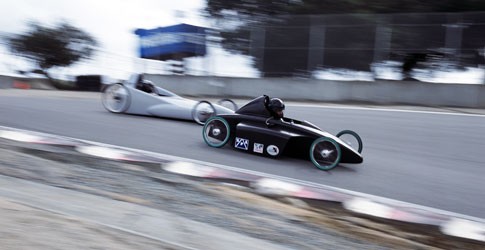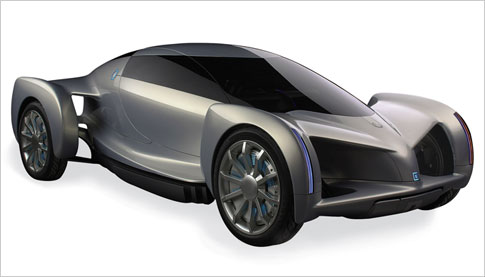

When Mercedes-Benz began to contemplate its next generation of high-efficiency small cars, it sought aquatic inspiration. But instead of considering obvious undersea hot rods like sharks, the Mercedes team turned to a fish that resembled a car: the tropical boxfish. A native of the Indo-Pacific region, the Ostracion cubicus is surprisingly slick. Wind-tunnel testing of a clay model revealed a drag coefficient (Cd) of just 0.06, startlingly close to the ideal 0.04 of a water droplet. Like the droplet, the boxfish´s face is small in proportion to its overall length, and its streamlined surfaces encourage air to move over it without creating the turbulence that robs aerodynamic efficiency. Mercedes´s Bionic concept vehicle mimics this functional form. With a Cd of just 0.19, the four-seat Bionic is significantly more slippery than today´s most aerodynamic production vehicle, Honda´s two-seat Insight (Cd 0.25). The design team eschewed expensive, complicated and heavy fuel-cell or hybrid powertrains, opting instead for a 1.9-liter four-cylinder direct-injection turbodiesel that pushes the fishmobile to 62 mph in 8.2 seconds with a combined city/highway fuel economy of 70 mpg. At a constant 56 mph, the concept car will return an amazing 84 mpg. Although the Bionic isn´t coming to your local dealership, Mercedes does expect it to significantly influence the design language of its next generation of small cars.





















